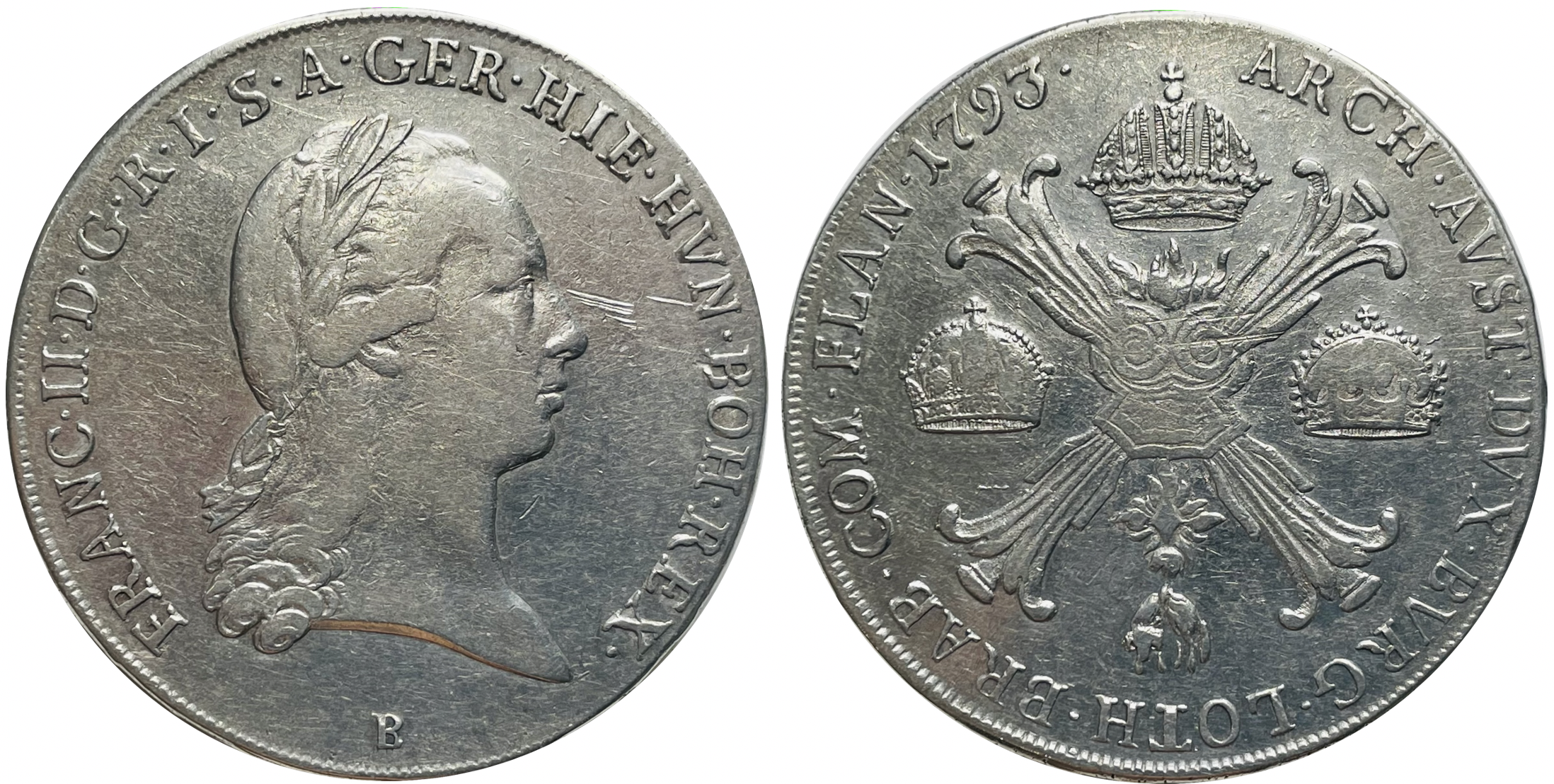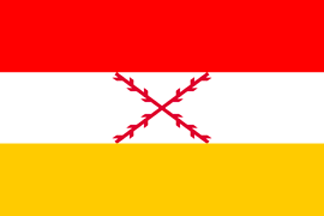Austrian Netherlands on:
[Wikipedia]
[Google]
[Amazon]
The Austrian Netherlands nl, Oostenrijkse Nederlanden; french: Pays-Bas Autrichiens; german: Österreichische Niederlande; la, Belgium Austriacum. was the territory of the Burgundian Circle of the

 Under the
Under the
 By mid-1790, Habsburg Austria ended its war with the Ottoman Empire and prepared to suppress the rebels. The new Holy Roman Emperor, Leopold II, was also a liberal and proposed an amnesty for the rebels. After defeating a Statist army at the
By mid-1790, Habsburg Austria ended its war with the Ottoman Empire and prepared to suppress the rebels. The new Holy Roman Emperor, Leopold II, was also a liberal and proposed an amnesty for the rebels. After defeating a Statist army at the
Holy Roman Empire
The Holy Roman Empire was a political entity in Western, Central, and Southern Europe that developed during the Early Middle Ages and continued until its dissolution in 1806 during the Napoleonic Wars.
From the accession of Otto I in 962 ...
between 1714 and 1797. The period began with the Austrian acquisition of the former Spanish Netherlands
Spanish Netherlands (Spanish: Países Bajos Españoles; Dutch: Spaanse Nederlanden; French: Pays-Bas espagnols; German: Spanische Niederlande.) (historically in Spanish: ''Flandes'', the name "Flanders" was used as a ''pars pro toto'') was the H ...
under the Treaty of Rastatt
The Treaty of Rastatt was a peace treaty between France and Austria that was concluded on 7 March 1714 in the Baden city of Rastatt to end the War of the Spanish Succession between both countries. The treaty followed the Treaty of Utrecht of 11 A ...
in 1714 and lasted until Revolutionary France
The French Revolution ( ) was a period of radical political and societal change in France that began with the Estates General of 1789 and ended with the formation of the French Consulate in November 1799. Many of its ideas are considere ...
annexed the territory during the aftermath of the Battle of Sprimont
The Battle of Sprimont, or Battle of the Ourthe (18 Sep 1794), was a battle during the War of the First Coalition between a corps of the French revolutionary Army of Sambre-and-Meuse under General Jean-Baptiste Jourdan, and the left wing of an ...
in 1794 and the Peace of Basel
The Peace of Basel of 1795 consists of three peace treaties involving France during the French Revolution (represented by François de Barthélemy).
*The first was with Prussia (represented by Karl August von Hardenberg) on 5 April;
*The sec ...
in 1795. Austria, however, did not relinquish its claim over the province until 1797 in the Treaty of Campo Formio
The Treaty of Campo Formio (today Campoformido) was signed on 17 October 1797 (26 Vendémiaire VI) by Napoleon Bonaparte and Count Philipp von Cobenzl as representatives of the French Republic and the Austrian monarchy, respectively. The trea ...
.
History

 Under the
Under the Treaty of Rastatt
The Treaty of Rastatt was a peace treaty between France and Austria that was concluded on 7 March 1714 in the Baden city of Rastatt to end the War of the Spanish Succession between both countries. The treaty followed the Treaty of Utrecht of 11 A ...
(1714), following the War of the Spanish Succession
The War of the Spanish Succession was a European great power conflict that took place from 1701 to 1714. The death of childless Charles II of Spain in November 1700 led to a struggle for control of the Spanish Empire between his heirs, Phil ...
, the surviving portions of the Spanish Netherlands
Spanish Netherlands (Spanish: Países Bajos Españoles; Dutch: Spaanse Nederlanden; French: Pays-Bas espagnols; German: Spanische Niederlande.) (historically in Spanish: ''Flandes'', the name "Flanders" was used as a ''pars pro toto'') was the H ...
were ceded to Austria. The Circle continued to give a single seat to the Reichstag to its owner, now the Emperor himself as alleged Duke of Burgundy. Administratively, the country was divided in four traditional duchies
A duchy, also called a dukedom, is a medieval country, territory, fief, or domain ruled by a duke or duchess, a ruler hierarchically second to the king or queen in Western European tradition.
There once existed an important difference between " ...
, three counties
A county is a geographic region of a country used for administrative or other purposesChambers Dictionary, L. Brookes (ed.), 2005, Chambers Harrap Publishers Ltd, Edinburgh in certain modern nations. The term is derived from the Old French ...
and various lordship
A lordship is a territory held by a lord. It was a landed estate that served as the lowest administrative and judicial unit in rural areas. It originated as a unit under the feudal system during the Middle Ages. In a lordship, the functions of econ ...
s.
Brabant Revolution
In the 1780s, opposition emerged to the liberal reforms ofEmperor Joseph II
Joseph II (German: Josef Benedikt Anton Michael Adam; English: ''Joseph Benedict Anthony Michael Adam''; 13 March 1741 – 20 February 1790) was Holy Roman Emperor from August 1765 and sole ruler of the Habsburg lands from November 29, 1780 un ...
, which were perceived as an attack on the Catholic Church and the traditional institutions in the Austrian Netherlands. Resistance, focused in the autonomous and wealthy Duchy of Brabant
The Duchy of Brabant was a State of the Holy Roman Empire established in 1183. It developed from the Landgraviate of Brabant and formed the heart of the historic Low Countries, part of the Burgundian Netherlands from 1430 and of the Habsburg Neth ...
and County of Flanders
The County of Flanders was a historic territory in the Low Countries.
From 862 onwards, the counts of Flanders were among the original twelve peers of the Kingdom of France. For centuries, their estates around the cities of Ghent, Bruges and Yp ...
, grew. In the aftermath of rioting and disruption, known as the Small Revolution, in 1787, many of opponents took refuge in the neighboring Dutch Republic
The United Provinces of the Netherlands, also known as the (Seven) United Provinces, officially as the Republic of the Seven United Netherlands (Dutch: ''Republiek der Zeven Verenigde Nederlanden''), and commonly referred to in historiography ...
where they formed a rebel army. Soon after the outbreak of the French and Liège revolutions, the ''émigré'' army crossed into the Austrian Netherlands and decisively defeated the Austrians at the Battle of Turnhout on 27 October 1789. The rebels, supported by uprisings across the territory, soon took control over much of the territory and proclaimed independence. Despite the tacit support of Prussia
Prussia, , Old Prussian: ''Prūsa'' or ''Prūsija'' was a German state on the southeast coast of the Baltic Sea. It formed the German Empire under Prussian rule when it united the German states in 1871. It was ''de facto'' dissolved by an em ...
, the independent United Belgian States
The United Belgian States ( nl, Verenigde Nederlandse Staten or '; french: États-Belgiques-Unis; lat, Foederatum Belgium), also known as the United States of Belgium, was a short-lived confederal republic in the Southern Netherlands (modern-da ...
, established in January 1790, received no foreign recognition and soon became divided along ideological lines. The Vonckists
The Vonckists ( nl, Vonckisten) were a political faction during the Brabant Revolution led by Jan Frans Vonck, opposed to the more conservative " Statists".
History
The group emerged from the secret society ''Pro aris et focis'' in the 1780s, and ...
, led by Jan Frans Vonck
Johannes Franciscus Vonck, also known by the Francization Jean-François Vonck or the Netherlandization Jan-Frans Vonck, (29 November 1743 – 1 December 1792) was a lawyer and one of the leaders of the Brabant Revolution from 1789–1790. This R ...
, advocated progressive and liberal government, whereas the Statists, led by Hendrik Van der Noot, were staunchly conservative and supported by the Church. The Statists, who had a wider base of support, soon drove the Vonckists into exile through terror.
 By mid-1790, Habsburg Austria ended its war with the Ottoman Empire and prepared to suppress the rebels. The new Holy Roman Emperor, Leopold II, was also a liberal and proposed an amnesty for the rebels. After defeating a Statist army at the
By mid-1790, Habsburg Austria ended its war with the Ottoman Empire and prepared to suppress the rebels. The new Holy Roman Emperor, Leopold II, was also a liberal and proposed an amnesty for the rebels. After defeating a Statist army at the Battle of Falmagne
The Battle of Falmagne (french: Bataille de Falmagne, nl, Slag bij Falmagne) was a battle which occurred between the Holy Roman Empire and the United Belgian States on 22 September 1790.
A volunteer force of 5,000 Belgian revolutionaries with f ...
(22 September 1790), the territory was soon overrun and the revolution was defeated by December. The Austrian reestablishment was short-lived, however, and the territory was overrun by the French in 1794 (during the War of the First Coalition
The War of the First Coalition (french: Guerre de la Première Coalition) was a set of wars that several European powers fought between 1792 and 1797 initially against the constitutional Kingdom of France and then the French Republic that suc ...
) after the
Battle of Fleurus.
Imperial Councillors of State
The Councillors of state acted as government, and formed the council by imperial consent:Almanach de la cour de Bruxelles sous les dominatione autrichienne et francaise, la monarchie des Pays-Bas et le gouvernement belge, de 1725 a 1840 (etc.) * The Baron Franz von Reischach, Imperial Diplomat * Cardinal von Migazzi * Cardinal von Frankenberg * the Baron of Gottignies, Imperial Lord Chamberlain * Philippe von Cobenzl, vice Chancellor of the Imperial Council of State. * Henri d'Ognies, Prince of Grimberghen, Imperial Lord Chamberlain * the Count of Neny; president of the Privy Council, member of the Imperial Council of State * the Count of Woestenraedt, Imperial Lord Chamberlain. * the Marquess of Chasteler, Lord Chamberlain * the Count of Gomegnies, President of the Council of Hainaut * the Viscount of Villers; Imperial Treasurer General * Franz Joseph, Prince of Gavre: Grand Marshall of the Imperial Court of the Archduchess.French rule
1794 was the third year of theWar of the First Coalition
The War of the First Coalition (french: Guerre de la Première Coalition) was a set of wars that several European powers fought between 1792 and 1797 initially against the constitutional Kingdom of France and then the French Republic that suc ...
. After the Battle of Fleurus (26 June), the Austrians gave up on contesting the Low Countries, and left it to the French. After three months of pure military occupation, on 15 October an ''Administration centrale et supérieure de la Belgique'' was installed. On 1 October 1795 the departments were activated and the definitive annexation started, liquidating the Belgian Governing Council, which ceased on 22 November. France annexed the Austrian Netherlands from the Holy Roman Empire and integrated them into the French Republic. The commissioner of the Directory, Louis Ghislain de Bouteville-Dumetz, finished his work on January 20, 1797, after which no common Belgian authority remained.
Notes
Citations
Sources
* Heinrich Benedikt. ''Als Belgien österreichisch war''. Herold, Vienna, 1965. {{Authority controlNetherlands
)
, anthem = ( en, "William of Nassau")
, image_map =
, map_caption =
, subdivision_type = Sovereign state
, subdivision_name = Kingdom of the Netherlands
, established_title = Before independence
, established_date = Spanish Netherl ...
Early Modern Luxembourg
Former polities in the Netherlands
Netherlands
)
, anthem = ( en, "William of Nassau")
, image_map =
, map_caption =
, subdivision_type = Sovereign state
, subdivision_name = Kingdom of the Netherlands
, established_title = Before independence
, established_date = Spanish Netherl ...
18th century in the Southern Netherlands
18th century in the Habsburg Monarchy
18th century in Luxembourg
States and territories established in 1714
States and territories disestablished in 1797
1714 establishments in the Holy Roman Empire
1797 disestablishments in the Holy Roman Empire